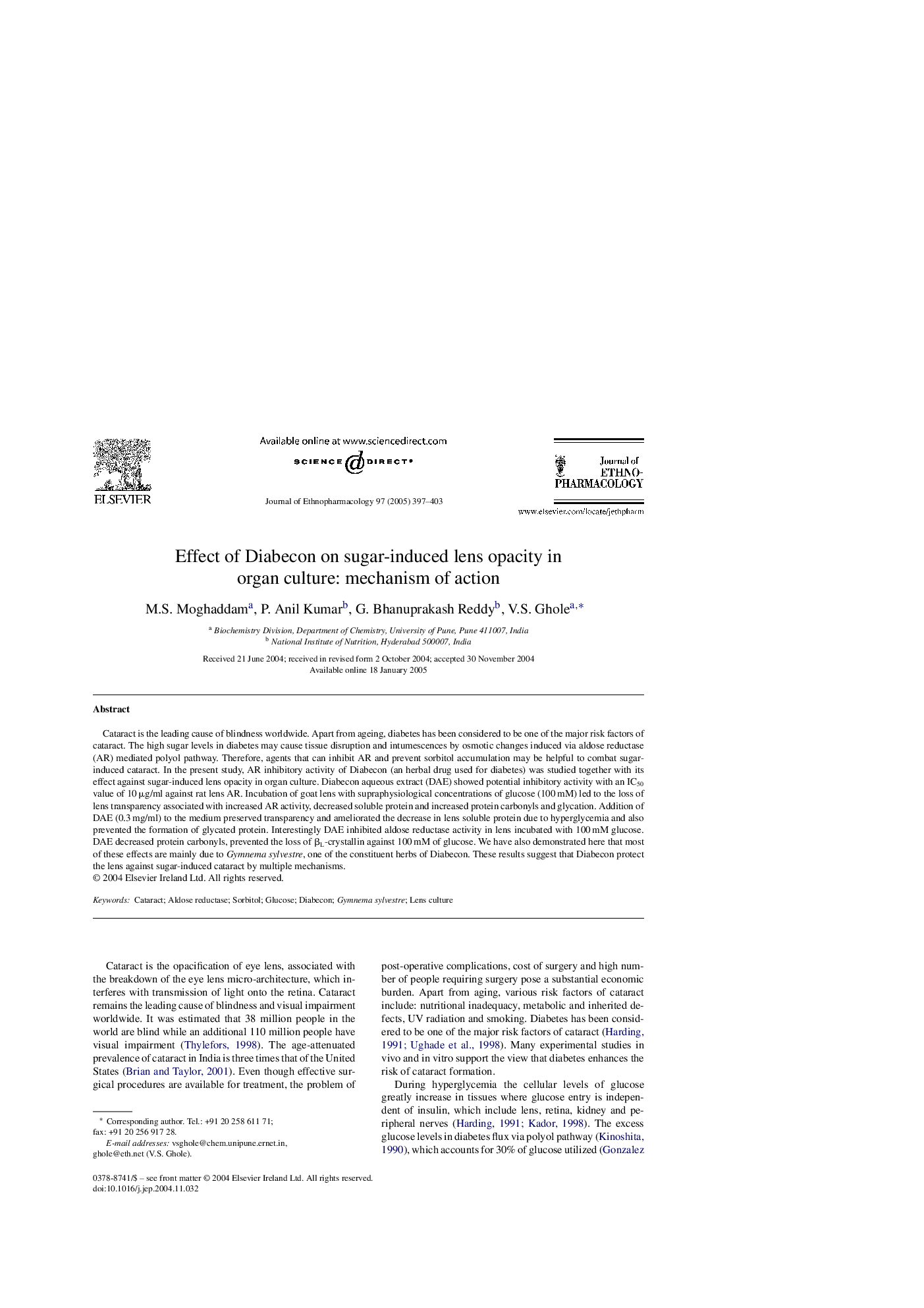| Article ID | Journal | Published Year | Pages | File Type |
|---|---|---|---|---|
| 9011489 | Journal of Ethnopharmacology | 2005 | 7 Pages |
Abstract
Cataract is the leading cause of blindness worldwide. Apart from ageing, diabetes has been considered to be one of the major risk factors of cataract. The high sugar levels in diabetes may cause tissue disruption and intumescences by osmotic changes induced via aldose reductase (AR) mediated polyol pathway. Therefore, agents that can inhibit AR and prevent sorbitol accumulation may be helpful to combat sugar-induced cataract. In the present study, AR inhibitory activity of Diabecon (an herbal drug used for diabetes) was studied together with its effect against sugar-induced lens opacity in organ culture. Diabecon aqueous extract (DAE) showed potential inhibitory activity with an IC50 value of 10 μg/ml against rat lens AR. Incubation of goat lens with supraphysiological concentrations of glucose (100 mM) led to the loss of lens transparency associated with increased AR activity, decreased soluble protein and increased protein carbonyls and glycation. Addition of DAE (0.3 mg/ml) to the medium preserved transparency and ameliorated the decrease in lens soluble protein due to hyperglycemia and also prevented the formation of glycated protein. Interestingly DAE inhibited aldose reductase activity in lens incubated with 100 mM glucose. DAE decreased protein carbonyls, prevented the loss of βL-crystallin against 100 mM of glucose. We have also demonstrated here that most of these effects are mainly due to Gymnema sylvestre, one of the constituent herbs of Diabecon. These results suggest that Diabecon protect the lens against sugar-induced cataract by multiple mechanisms.
Related Topics
Health Sciences
Pharmacology, Toxicology and Pharmaceutical Science
Pharmacology
Authors
M.S. Moghaddam, P. Anil Kumar, G. Bhanuprakash Reddy, V.S. Ghole,
